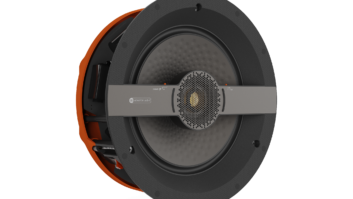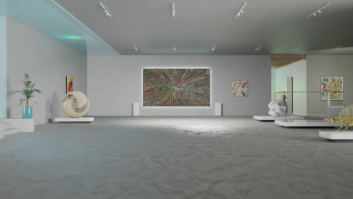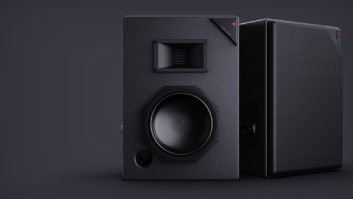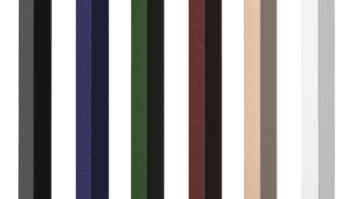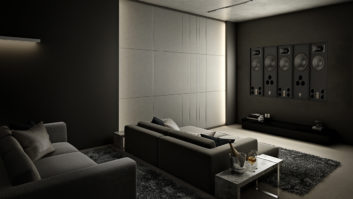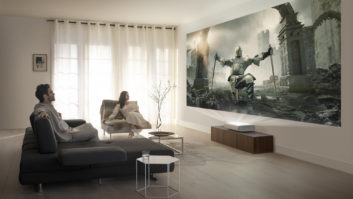In last months column, we covered a lot of really technical stuff about speaker directivity and examples of directivity in some typical speaker designs. This month, we have the good stuff: How we use directivity to our advantage when were designing a sound system.
First, lets take a look at the concept of using a two-way DAppolito array as a center speaker. As you may recall from last time, a DAppolito array will have an oval radiation pattern in the midrange because of the dual woofers. The orientation of the oval is perpendicular to the woofers, so if the DAppolito is horizontal, then the oval is vertical.
To the left and right of the vertical oval radiation pattern there will be a loss of sound level. This is in fact an extremely bad arrangement for a center speaker! A listener who is precisely in front of the speaker will hear good sound, but a person to that listeners left or right is going to be outside of the vertical oval mid-frequency radiation pattern. The sound will be inarticulate and lack in presence. Thats a bad thing for a speaker whos role is to precisely reproduce dialog and action sounds central to the soundfield!
What to do? Simply turn the DAppolito vertically and aim it at the listeners. Every listener is within the oval radiation pattern, which is now horizontal.
Second, directivity can tell us how to orient a traditional two-way speaker if it must be placed significantly above or below listeners and cannot be aimed. As we discussed, there will be crossover lobes firing away from the speaker at angles that are typically diagonal to the front of the speaker cabinet. This means that listeners who are located at a diagonal from the cabinet face are probably in a crossover lobe. Usually, the frequency response in one of the two lobes is better than the other. One direction could actually have sound cancellations. The speaker should be oriented with the better lobe firing at the listeners.
Thats much more important than merely trying to keep the tweeters close to seated ear height. Traditional three- and four-way speakers can be oriented using this same principle. In their case, consider primarily the lobe between the tweeter and the midrange, and dont worry about the midrange-woofer lobes.
Speaker manufacturers will usually tell you which lobe is better, but there may be times when you dont trust the manufacturer, or they arent available for comment. In either of these cases, you can determine the better lobe by listening to the speaker playing pink noise and moving your head up and down through the crossover region.
Third, you can use directivity to pick the type of LCR speaker to use in a particular application. Knowing that speakers with higher directivity provide tighter imaging, and that speakers with lower directivity provide more sense of envelopment, you have several decisions to make in the process of model selection. Also, it is well-documented in psychoacoustics research reports that ceiling and floor reflections are the most detrimental to imaging accuracy, so speakers with focused vertical dispersion are always a good idea in a room with no acoustic treatments on the floor or ceiling. (Thats most rooms, folks.) Well, what kind of speaker has focused vertical dispersion? One answer is a two- or three-way DAppolito array.
Say you work really hard to acoustically treat a room. What kind of speaker should go in there? One with highly focused dispersion may sound too sharp and tight, so think about a speaker with broader dispersion.
A traditional two-way might be the best choice. Conversely, in a big, reverberant room where the listeners are far away from the speakers, you should head toward focused DAppolito arrays, particularly ones with horn-loaded tweeters. In the case of a large room, focused dispersion provides two advantages. One is that the speaker doesnt excite as much of the rooms reverberant soundfield. The second is that the speaker experiences less sound pressure loss over distance. DAppolito arrays and horns work very much like a nozzle on a garden hose. Without the nozzle, water pours randomly from the hose. With the nozzle, water is focused in a tighter pattern and projects much farther. Sound works the same way.
Fourth, directivity can go a long way toward solving the surround speaker conundrum that everyone is endlessly debating these days. Human beings directional delineation does not remain constant around the head in a 360-degree circle, so surround speakers positioned to the sides and rear of the head should not necessarily have the same directivity as LCR speakers positioned in front of the head.
In a small, treated room, several methods can be employed to reduce the directivity of surround speakers so that they disappear yet form nice, clear images with the LCR speakers. One method is to use a surround speaker with broader dispersion, such as a dipole or bipole.
Large rooms naturally enhance the reverberant field of a speaker, so dipoles or bipoles are often unnecessary. Surround speakers can be more directional without becoming distracting and without integrating poorly with the LCR speakers.
The quality of any sound system is really determined by the sum of the speakers and the room. In most listening rooms, listeners hear more reflected energy from the room than direct energy from the speakers. Thus, a speakers directivity, the way it radiates sound into that room, is vitally important. If you dont consider it, you will end up doing something goofy like putting a traditional three-way rather than a three-way tapered array in your latest clients massive sci-fi home theater, which looks more like Professor Xaviers Cerebro than a miniature movie palace…
To download a copy of the entire two-part article on directivity, please visit www.pmiltd.com.

